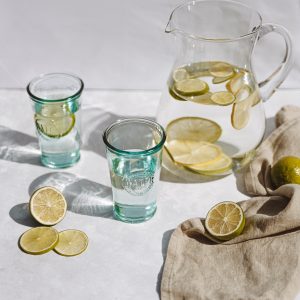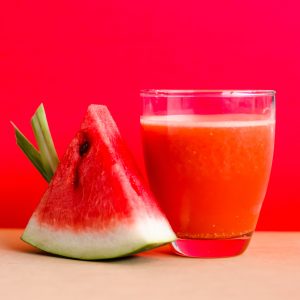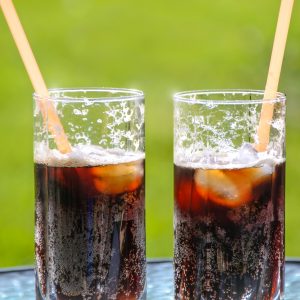Beverage Breakdown: Your Guide to Healthier Drink Choices for Kids
Here at You’re the Mom, we talk a lot about food and how to feed your kids in a healthy way. We’ve covered a lot in past blogs and Instagram posts, but one thing we haven’t yet talked about in detail are beverages. Beverages are super important. Most of us have something to drink at every meal, and usually throughout the day as well. Beverages are important for staying hydrated and can give us necessary nutrients, but some of them can be full of added sugar and empty calories. If you follow us on social media, you’ve seen our posts and videos from Dr. Caree all about drinking more water. In the coming weeks, Dr. Caree will be bringing you even more tips and tricks for getting the whole family on board with healthier drinks. To support you on your journey, we put together this guide to different drinks to help you make decisions about which drinks to serve your kids. In this post, we’re going to simplify the information on beverages by talking about common beverages for kids, what you need to know about them, and how often kids should have them.
Water

Water is our favorite for a number of reasons! Water has zero calories and is great for hydration. We need water for our bodies to work effectively, and we need to replace the water in our bodies when we sweat. Water is also important for kids because it helps them to keep their body temperature at a normal level and keeps them feeling energized. Kids have different water needs depending on age, but generally kids ages 5-8 need about 5 cups of water a day, while kids 9-13 need about 8 cups of water a day. If your child is thirsty, water is going to be your best bet!
Milk
The question we often hear is “Do kids need to drink milk?” Milk is a great beverage for kids, but it is different from water in a number of ways. Milk is considered to be part of the dairy food group, and it does have calories. Milk is a great source of calcium and vitamin D, both of which are nutrients that are important for bone growth and development. However, these nutrients aren’t only found in milk. Foods like spinach, white beans, salmon, and fortified oatmeal are good sources of calcium and vitamin D, and a number of other nutrients as well! The point is, there’s a lot of great ways to get Vitamin D and calcium in the diet, and while milk can be a part of that, it’s not essential that kids drink milk. It’s also worth mentioning that non-dairy milk like almond milk and soy milk are not a replacement for milk, as these beverages do not have the same nutrients as dairy milk. If you purchase non-dairy milk for your home, be sure to buy the unsweetened kind to avoid excess calories and sugar.
Juice

Juice can be confusing because not all juices are created equal. Reading labels is important to understand the ways that certain types of juices are different from one another. When choosing which juice to purchase, you want to look for 100% fruit juice with no added sugar. This information can be found on the nutrition facts label on the back or side of the package. You’ll want to look at where it says “added sugar” and the ingredients listed at the bottom to ensure there is no added sugar and that the juice is in fact 100% fruit juice. However, keep in mind that serving your child fruit juice is not the same as giving them a piece of fruit to snack on. For example, while an apple does contain sugar, it also has fiber, which slows the rate that our bodies absorb the sugar and doesn’t spike blood glucose. Fiber also helps you to feel fuller for longer. Fruit juice typically has much more sugar than a single piece of fruit and doesn’t leave kids feeling satisfied. If you are going to give your kid fruit juice or vegetable juice, make sure there is no added sugar and that you limit the amount that they have each day. If you have a juice-loving child, try serving a glass of half-juice, half-ice water, or plain seltzer. It’s a good compromise, a way to cut back on some calories and sugar, and can help to wean them off of juice. As a reminder, water is the best option when kids are thirsty!
Soda

This is a sometimes food! Soda has a ton of sugar- in some cases, it has almost double the sugar of a candy bar! You wouldn’t give your child a candy bar at every meal, let alone two candy bars. For that reason, soda should be limited, and only be available every once in a while. If you want something bubbly, try a calorie-free seltzer, or check out some of our recipes for homemade “sodas” that have a fraction of the sugar that regular sodas have.
Sports drinks
Sports drinks can be tricky because when we see them in commercials, they’re made to seem like they are necessary for athletes. The reality is that most sports drinks contain a lot of unnecessary sugar and sodium, and that water is better for kids who are exercising or at sports practice. You have also probably heard that sports drinks replace electrolytes in the body. While sports drinks do contain electrolytes, so do a lot of other foods that are much healthier! Avocados, bananas, and watermelon are all good sources of electrolytes- and make a great post-game snack! Skip the sports drinks and go for H20 and replenish electrolytes with whole foods.
We hope this information helps you to make healthy, educated choices for kids! What questions do you have for us about beverages? What beverages do your kids love? Let us know in the comments!
Want to learn more about healthy beverages for kids? Visit https://healthydrinkshealthykids.org to read the recommendations from the Academy of Nutrition and Dietetics, the American Academy of Pediatric Dentistry, the American Academy of Pediatrics, and the American Heart Association.